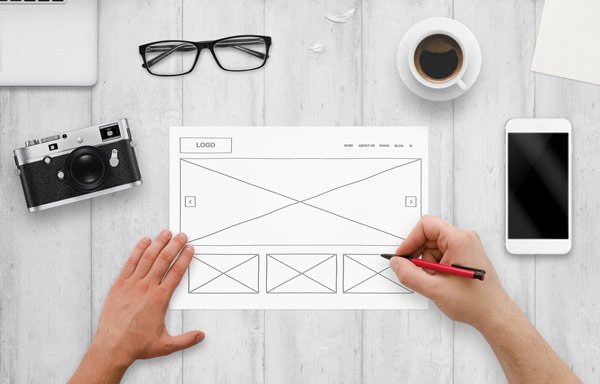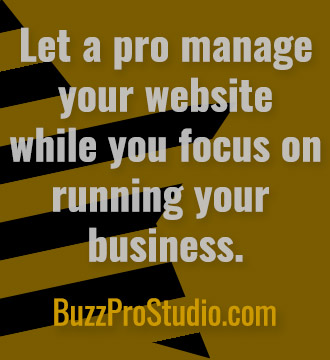When you’re shopping around for a small business website design, do you know what to look for and what to avoid? Do you know which design elements will make your site more appealing and which elements will turn visitors away?
If you’ve spent much time surfing the web, you’ve probably noticed that some websites’ design elements are distracting, annoying, or just plain ugly. We’ve all bumped into a few websites that make us want to scream. Luckily, escape is just a click away.
But if you’re a small business owner, you definitely don’t want visitors clicking away from your website, especially if they’re seeking escape because the design is unappealing or irritating.
9 Small Business Website Design Elements to Avoid
Here’s a list of design elements that people frequently complain about. Most of these recommendations have been on web designers’ things-to-avoid lists for years, but these frustrating features keep rearing their ugly heads all over the internet. Be smart and avoid these small business website design faux pas:
- Automatically Playing Sound: This is number one on the list for good reason. Nothing startles a website visitor more than loud audio suddenly protruding from their speakers. Maybe the visitor is already listening to background music. Maybe they’re trying to focus on your content (and if your content is not centered around music, the sound is just a distraction). Maybe there’s a baby sleeping nearby. Be considerate and make audio optional.
- Flashing, Blinking, or Scrolling Text: If it’s subtle, you might get away with it. But like audio, moving text is nothing more than a distraction. Sure, you might be using it to get the visitor’s attention, but once you do and they start seriously perusing your site, it’s just going to become an annoyance.
- Animations: Some animations work well with a design. If you’re an illustrator or an animator, go for it. But if you’ve got a website that’s centered around some product or service that doesn’t include art or animation, then keep your content static.
- Overdoing Pop-up Windows: Experts go back and forth on this one. There was a time when everyone agreed that all pop-ups were bad (don’t distract visitors from your content!), but then we learned that pop-ups inviting visitors to subscribe actually work. As web surfers become more sophisticated, this could change again. Online behavior changes over time, so we’ll see. In the meantime, if you use pop-ups, use them strategically and sparingly. Don’t have pop-ups interrupting visitors every fifteen seconds or on every page or refresh so that they can’t take in your actual content.
- Loud or Distracting Image Backgrounds: Use background images judiciously. As long as the images are fast-loading and blend seamlessly into the design, you should be okay. But if the visitor’s eyes are drawn more to the background images than the foreground content, your site is in trouble.
- iFrames: These days, with CSS, content management systems, and other design technologies so readily available, frames are just an unnecessary and outdated technique for organizing the content on a site. The problem with frames is that they are not compatible with all browsers and may render differently on different computers. And iframes have been out of use for long enough now that if your site still uses them, it looks like an artifact (not in a good way) rather than a modern, functional website. So opt for a content management system (like WordPress) instead.
- Excessively Wide or Long Pages: This should go without saying, but I still run into these types of websites on occasion. I always wonder if the designer is using an enormous monitor and has forgotten that most people use 15- to 17-inch screens. Visitors don’t like to scroll endlessly down (or across) the page. Except on index pages of your site, keep scrolling to the length of two or three pages at the most. Avoid pages that require horizontal scrolling, especially now that many visitors are accessing your website from mobile devices, which are often held vertically.
- Indistinguishable Links: Have you ever hovered your mouse over a web page and accidentally tapped it, causing a window to open and carry you off to some other page? That’s just plain weird. Links are meant to be clicked, so make sure they’re clickable and make sure visitors can distinguish a link from regular text. Use colored text for links, and don’t make any text colored unless it links to something.
- Overriding Link Instructions: When I use command-click to open a link in a new tab, I want it to open in a new tab. I am perpetually bewildered at websites that override how I want to view and use my own browser based on the defaults. While we’re on the subject, structure your links to open pages in a new tab only when it makes strategic sense to do so. If I’m surfing around on your website and then find that there are a dozen of your website’s pages open in my browser, I’m going to be annoyed, and that’s not how you want to visitors feeling when they leave. A good protocol is to keep all links in the current tab if they are on your own website but open a new tab if you’re sending them offsite.
Exceptions to These Website Design Tips
These design elements should be avoided, but not always. Whenever you’re reading a list of tips, it’s important to remember that there are always exceptions. In the list above, I’ve pointed out some obvious exceptions, but you should remember to use your best judgment and keep in mind that sometimes breaking the rules or defying convention is a good thing. A good rule is to always put yourself in your visitors’ shoes and consider how the experience will impact them and shape the experience they’re having on your website.
If you’re not sure whether a particular small business website design idea would have a negative impact on your site, ask your website designer or consult with an online marketing specialist. Also, ask friends, family, customers, and professionals in your network. Nothing beats user feedback!
Buzz Pro Studio provides website services to small businesses and independent professionals, specializing in website design and maintenance. For more information or to get a no-obligation quote, contact me.
Melissa Donovan is the founder of Buzz Pro Studio, providing website services to small businesses and independent professionals.


